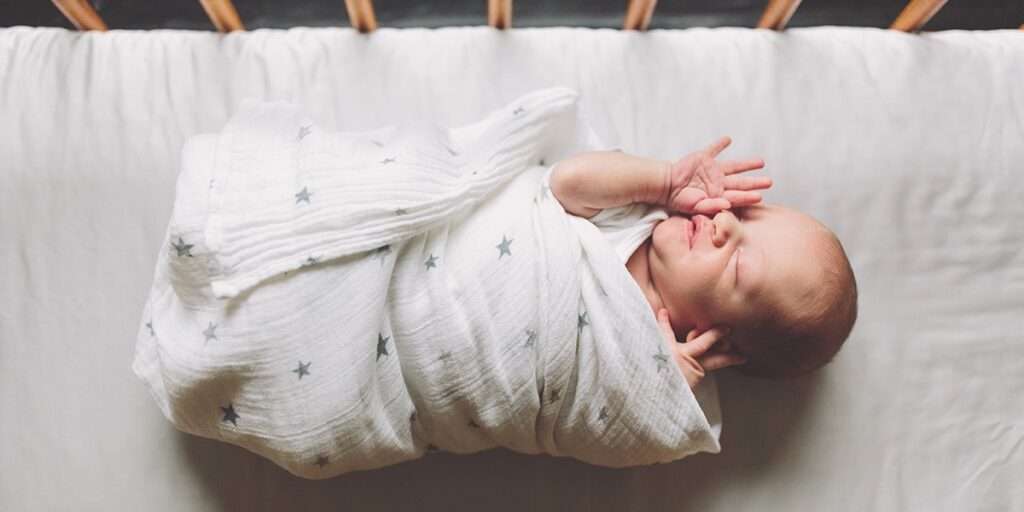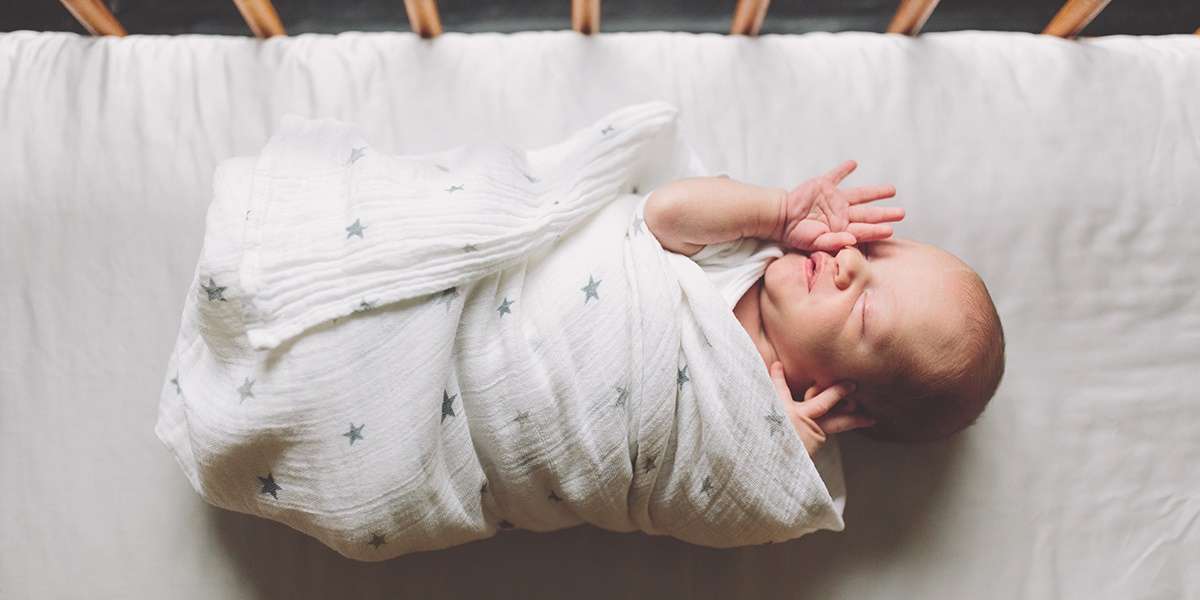Independent sleeping refers to the ability of a baby to sleep alone in their crib or bed without needing constant parental presence or intervention. Encouraging independent sleeping is essential as it helps the baby develop self-soothing skills and promotes healthier sleep patterns for both the baby and the parents.
Overview of Benefits for Baby and Parents
Independent sleeping offers numerous benefits, including:
- For the Baby: Enhanced self-soothing skills, improved sleep quality, and the development of a sense of security and independence.
- For the Parents: Better sleep, reduced stress, and more personal time, leading to overall improved family well-being.
2. Understanding Baby Sleep Patterns
Newborn Sleep Cycles
Newborns have irregular sleep patterns, often sleeping 16-18 hours a day in short bursts of 2-4 hours. They spend more time in REM sleep, which is light and easily disrupted.
Changes in Sleep Patterns Over Time
As babies grow, their sleep patterns become more predictable. By 6 months, many babies sleep 10-12 hours at night with 2-3 naps during the day. Understanding these changes helps parents support their baby’s sleep needs effectively.
Common Sleep Issues in Babies
Common sleep issues include difficulty falling asleep, frequent night wakings, and short naps. Identifying and addressing these issues early can prevent them from becoming long-term problems.
3. Establishing a Consistent Bedtime Routine
Importance of Routine for Babies
A consistent bedtime routine signals to the baby that it’s time to wind down and prepare for sleep. This predictability helps them feel secure and promotes better sleep habits.
Steps to Create a Bedtime Routine
- Set a Consistent Bedtime: Choose a time that suits your baby’s natural sleep patterns and stick to it.
- Create a Calming Environment: Dim the lights, reduce noise, and create a peaceful atmosphere.
- Incorporate Relaxing Activities: Activities like a warm bath, gentle massage, and reading a bedtime story can help soothe your baby.
- Follow the Same Sequence Every Night: Consistency helps your baby understand the routine and what to expect.
Adjusting the Routine as Baby Grows
As your baby grows, their sleep needs and preferences may change. Adjust the routine accordingly, such as modifying bedtime or adding new calming activities.

4. Creating a Sleep-Friendly Environment
Ideal Room Temperature and Lighting
The ideal room temperature for a baby’s sleep is between 68-72°F (20-22°C). Ensure the room is dark, using blackout curtains if necessary, to promote better sleep.
Choosing the Right Crib and Bedding
Choose a crib that meets safety standards and use firm, flat bedding. Avoid soft toys, pillows, and blankets in the crib to reduce the risk of suffocation.
Using White Noise and Sleep Aids
White noise machines or apps can help mask household noises and create a consistent sound environment. Other sleep aids, like sleep sacks, can also promote a sense of security and comfort.
5. Recognizing Sleep Cues
Identifying Signs of Sleepiness
Common sleep cues include rubbing eyes, yawning, fussiness, and decreased activity. Recognizing these signs helps you put your baby to bed before they become overtired.
Responding to Sleep Cues
When you notice sleep cues, start the bedtime routine immediately. This helps your baby associate these cues with sleep and makes it easier for them to settle down.
Avoiding Over-Tiredness
Over-tiredness can make it harder for babies to fall asleep and stay asleep. Keep an eye on wake windows and ensure your baby gets enough rest during the day to avoid this issue.
6. Setting Up a Safe Sleep Space
Safe Sleep Guidelines
Follow safe sleep guidelines to reduce the risk of Sudden Infant Death Syndrome (SIDS). These include placing the baby on their back to sleep and using a firm sleep surface.
Positioning and Sleep Safety Tips
Position your baby on their back and keep the crib free of soft items. Use a fitted sheet and ensure the crib is free of hazards.
Reducing the Risk of SIDS
To further reduce the risk of SIDS, avoid overheating, do not smoke around the baby, and consider using a pacifier at nap and bedtime.
7. Introducing a Lovey or Comfort Object
Choosing a Suitable Lovey
Select a small, soft object that is safe for your baby to sleep with, such as a blanket or stuffed animal. Ensure it is free of choking hazards.
Safe Introduction of Comfort Objects
Introduce the lovey during the bedtime routine and ensure it is always present when your baby is going to sleep. This helps create a strong sleep association.
Benefits of a Lovey for Sleep
A lovey provides comfort and security, helping your baby feel safe and calm when falling asleep and during night wakings.
8. Gradual Transition from Co-Sleeping
Benefits and Drawbacks of Co-Sleeping
While co-sleeping can promote bonding and make nighttime feedings easier, it can also lead to sleep disruptions and dependency on parental presence for sleep.
Steps for Transitioning to Independent Sleeping
- Start with Naps: Begin by having your baby nap in their crib to get them used to sleeping alone.
- Move to Nighttime Sleep: Once your baby is comfortable napping alone, transition to having them sleep in their crib at night.
- Stay Consistent: Consistency is key to a successful transition. Stick to the new routine even if there are initial challenges.
Managing Separation Anxiety
To manage separation anxiety, spend quality time with your baby during the day, use a lovey for comfort, and reassure them with your presence if they wake up during the night.
9. Implementing Sleep Training Techniques
Overview of Sleep Training Methods
Various sleep training methods include the Ferber method, the chair method, and the cry-it-out method. Each method has different levels of parental involvement and approaches to teaching self-soothing.
Choosing the Right Method for Your Baby
Consider your baby’s temperament, your parenting style, and your comfort level with each method. It may take some trial and error to find the best fit.
Common Challenges and Solutions
Common challenges include resistance to sleep training, night wakings, and parental guilt. Address these by staying consistent, seeking support, and focusing on the long-term benefits of independent sleep.
10. Understanding and Managing Sleep Regressions
What Are Sleep Regressions?
Sleep regressions are periods when a baby who previously slept well starts waking up frequently or has trouble falling asleep. They often coincide with developmental milestones.
Common Ages for Sleep Regressions
Sleep regressions commonly occur around 4 months, 8-10 months, and 18 months. Each regression typically lasts 2-6 weeks.
Tips for Managing Sleep Regressions
Maintain a consistent routine, provide extra comfort and reassurance, and ensure your baby is getting enough daytime sleep to help navigate sleep regressions.
11. Promoting Self-Soothing Skills
Teaching Self-Soothing Techniques
Encourage self-soothing by allowing your baby to try to settle themselves before intervening. Techniques include thumb-sucking, using a lovey, or gently patting themselves.
Encouraging Independent Settling
Gradually reduce your involvement in helping your baby fall asleep. For example, if you rock them to sleep, start by putting them down drowsy but awake.
Role of Parents in Self-Soothing
Parents play a crucial role in teaching self-soothing by providing a consistent bedtime routine, a secure sleep environment, and patience as the baby learns to self-settle.
12. Daytime Habits to Support Nighttime Sleep
Importance of Daytime Sleep
Good daytime sleep is essential for nighttime sleep. Well-rested babies tend to sleep better at night.
Balancing Naps and Nighttime Sleep
Ensure your baby is getting appropriate naps for their age. Avoid letting them nap too close to bedtime, which can interfere with nighttime sleep.
Creating a Consistent Daily Schedule
A consistent daily schedule helps regulate your baby’s internal clock, making it easier for them to fall asleep and wake up at regular times.
13. Handling Night Wakings
Common Reasons for Night Wakings
Night wakings can be caused by hunger, discomfort, developmental milestones, or sleep associations. Identifying the cause is key to addressing the issue.
Strategies for Reducing Night Wakings
Establish a consistent bedtime routine, ensure your baby is comfortable, and encourage self-soothing techniques to reduce night wakings.
Responding to Night Wakings
When your baby wakes up at night, respond calmly and consistently. Avoid creating new sleep associations by keeping interactions brief and soothing.
14. Dealing with Separation Anxiety at Bedtime
Understanding Separation Anxiety
Separation anxiety is a normal developmental stage where babies become distressed when separated from their parents. It often peaks around 8-10 months.
Techniques to Ease Anxiety
Gradual separation techniques, such as the chair method, can help ease anxiety. Provide extra comfort and reassurance, and spend quality time together during the day.
Gradual Separation Techniques
Gradual separation involves slowly reducing your presence in the room over time. Start by sitting next to the crib and gradually move farther away each night.
15. Sleep Associations and How to Change Them
Identifying Sleep Associations
Sleep associations are habits or objects your baby relies on to fall asleep, such as rocking, nursing, or using a pacifier.
Positive vs. Negative Sleep Associations
Positive sleep associations, like a lovey or white noise, promote independent sleep. Negative associations, like rocking or nursing to sleep, can lead to frequent night wakings.
Steps to Change Sleep Associations
Gradually replace negative associations with positive ones. For example, if your baby is used to being rocked to sleep, slowly transition to putting them down drowsy but awake.

16. Using Bedtime Stories and Lullabies
Benefits of Bedtime Stories
Bedtime stories promote relaxation, bonding, and language development. They help signal to your baby that it’s time to sleep.
Choosing Appropriate Books
Select books that are simple, calming, and have repetitive text. Board books with colorful pictures are ideal for young babies.
Incorporating Lullabies into the Routine
Lullabies can soothe your baby and create a calm atmosphere. Sing or play gentle music as part of the bedtime routine.
17. Ensuring Adequate Nutrition for Better Sleep
Impact of Nutrition on Sleep
Adequate nutrition supports better sleep by ensuring your baby is not waking up from hunger. Balanced meals and proper hydration are essential.
Timing of Feedings and Solid Foods
Plan feedings to avoid your baby being too full or hungry at bedtime. Introduce solid foods gradually and monitor how they affect sleep.
Avoiding Sleep Disruptive Foods
Avoid foods that can disrupt sleep, such as those high in sugar or caffeine. Pay attention to how new foods affect your baby’s sleep patterns.
18. Managing Teething and Its Impact on Sleep
Signs of Teething
Common signs of teething include drooling, gum swelling, irritability, and chewing on objects. These can disrupt sleep.
Teething Remedies and Sleep Solutions
Use teething rings, cold washcloths, and safe teething gels to soothe discomfort. Maintain the bedtime routine to provide comfort and security.
Maintaining Sleep Routine During Teething
Stick to the established sleep routine even during teething. Extra comfort and reassurance can help your baby settle despite the discomfort.
19. Travel and Sleep Routine Maintenance
Preparing for Travel
Plan ahead for travel by packing familiar sleep items, such as your baby’s lovey or sleep sack. Maintain as much of the bedtime routine as possible.
Maintaining Sleep Routine While Traveling
Try to replicate the sleep environment at your travel destination. Stick to regular nap and bedtime schedules to the extent possible.
Tips for Better Sleep Away from Home
Bring familiar items, maintain a consistent routine, and provide extra comfort to help your baby sleep well while traveling.
20. Consulting a Pediatrician for Sleep Issues
When to Seek Professional Help
Seek professional help if your baby has persistent sleep issues despite following a consistent routine and implementing sleep training techniques.
What to Expect from a Sleep Consultation
A pediatrician will assess your baby’s sleep patterns, health, and development to identify any underlying issues and provide tailored recommendations.
Follow-Up and Long-Term Sleep Management
Follow-up consultations and ongoing support can help address sleep challenges as your baby grows and their needs change.










